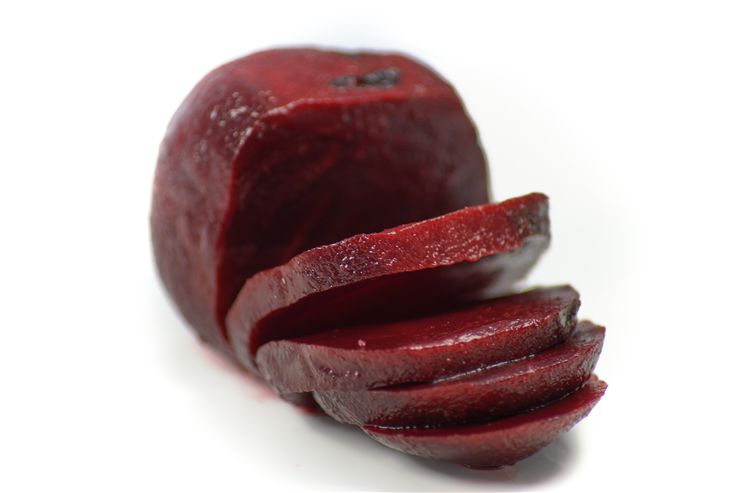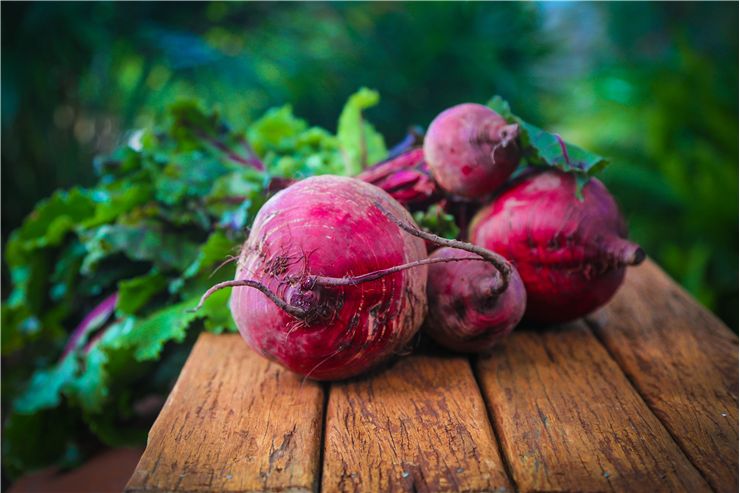Beetroot Nutrition Facts - Health Benefits of Beets
- Beetroot is a part of the beet plant, its taproot more precisely, that we use as food, in food coloring, and as a medicinal plant. It is also known as table beet, garden beet, red beet, golden beet, or simply as a beet.
- Purple roots of beetroot are eaten boiled, roasted, cooked, or pickled.
- Assyrians knew about beetroot at least since the 9th century BC. Ancient Greeks and Romans also knew about this plant. It was, for instance, offered to Greek god Apollo in his temple at Delphi and Greeks valued beetroot to have the same price as silver by weight. They also mostly used leaves for food. Ancient Romans used more of it. Apicius, Roman, who wrote “The Art of Cooking”, made broths and salads with mustard, oil, and vinegar out of beetroot.
- Beetroots of the early days were long and thin like carrots. Beetroots as we know today – round, appeared in the 16th century and became popular 200 years later.
- In Victorian times, beetroot was used for salads, but it was also used as a sweet ingredient in cakes and puddings.
- Beetroot juice has an interesting characteristic – it can be used to measure acidity, sort of like litmus. If it is added to an acidic solution, it will turn pink while if you add it to an alkali, it will turn yellow.

- The natural red colorant in beetroot – betanin, is used as a food coloring. It is used in various sauces, jams, breakfast cereals, and even ice creams. If eaten in higher concentrations, betanin can turn urine and stool red. Don't worry, this effect is harmless.
- Beetroot leaves are also edible and are prepared mostly in salads although it can be served boiled or steamed.
- Beetroot can be eaten with garlic to cancel the effects of “garlic-breath”.
- Although beetroot juice can be drunk “as is”, a type of wine can also be made of beetroot.
- Since the earliest days, people knew about health benefits of the beetroot. They used it to treat fevers, constipation, wounds and various skin problems, among other illnesses.
- Betaine, which is one of the nutrients of beetroot, reduces the concentration of homocysteine, which in turn can damage blood vessels if our body has it in higher concentrations. Because of that, beetroot prevents heart disease, stroke, or peripheral vascular disease. Betaine also may protect against liver disease, protect the liver against the damage caused by alcohol abuse, protein deficiency, or diabetes.
- Beetroot is also a great source of vitamin C. Vitamin C is an immunity buster and an antioxidant which fights free radicals which, in turn, damage our cells and make us age faster. It also prevents scurvy.
- Beetroot juice reduces high blood pressure because of high concentration of nitrite. Effects of one glass of beetroot juice on the heart can last up to 24 hours. Among other stuff, beetroot juice contains magnesium, phosphorus, sodium, potassium, calcium, copper, selenium, zinc, iron, and manganese. Of vitamins, beetroot juice made of raw beetroot has vitamins A, B1, B2, B3, B9 and vitamin C.
- Iron from beetroot can help those people that are anemic (have low hemoglobin in blood.)
- Beetroot helps digestion by helping digesting fats. Beetroot stimulates the nerves in the intestine and increases stomach acid which can help those that hypochlorhydria – problem with low levels of stomach acid.
- Beetroot can also speed up metabolism and, with that, help those that have a problem with obesity.
- The betalains and vitamin C, as antioxidants, also lower chances of cancer.
- Beetroot juice dilates blood vessels and improves blood flow to the brain. It also boosts stamina by lowering oxygen intake which makes training less exhaustive.

